Common-Works 2.3
Taipei
2019
As an ongoing edition-based performance project Common-Works deals with the development of collective, semi-improvised movement practices that aim to re-locate notions of discourse and representation within collectively experienced intensities such as flow, embodiment, notions of becoming and collective trance.
The score-edition was performed in mandarin, on Sunday 22nd December 2019, at 臺藝大造形表演工坊Atelier Transformeurs
In collaboration with 張勻甄 Yunchen Chang、陳品聿 Piin-Yuh Chen、吉瑞娸 Ruei-Ci CHI (Bast Gi)、許生翰Sheng Han Hsu (Sean Trudi Hsu)、黃郁元 Yu-Yuan Huang、黃柏嘉 Bo-Jia Huang、王思涵 Ssu-Han Wang 、高郁婷 Yu-Ting Kao (Kao)、呂莛 Ting Lu、蔡代琪 Dai-Chi Tsai Concept Timothy Nouzak In conversation with Freda Fiala Supported by 臺藝大造形表演工坊 Atelier Transformeurs, 國立臺灣藝術大學 National Taiwan University of Arts (NTUA), 國立臺北藝術大學 Taipei National University of the Arts (TNUA) and 台北國際藝術村 Taipei Artist Village
Taipei
2019
As an ongoing edition-based performance project Common-Works deals with the development of collective, semi-improvised movement practices that aim to re-locate notions of discourse and representation within collectively experienced intensities such as flow, embodiment, notions of becoming and collective trance.
The score-edition was performed in mandarin, on Sunday 22nd December 2019, at 臺藝大造形表演工坊Atelier Transformeurs
In collaboration with 張勻甄 Yunchen Chang、陳品聿 Piin-Yuh Chen、吉瑞娸 Ruei-Ci CHI (Bast Gi)、許生翰Sheng Han Hsu (Sean Trudi Hsu)、黃郁元 Yu-Yuan Huang、黃柏嘉 Bo-Jia Huang、王思涵 Ssu-Han Wang 、高郁婷 Yu-Ting Kao (Kao)、呂莛 Ting Lu、蔡代琪 Dai-Chi Tsai Concept Timothy Nouzak In conversation with Freda Fiala Supported by 臺藝大造形表演工坊 Atelier Transformeurs, 國立臺灣藝術大學 National Taiwan University of Arts (NTUA), 國立臺北藝術大學 Taipei National University of the Arts (TNUA) and 台北國際藝術村 Taipei Artist Village
The following score is split into 5 chapters, reflects on how “Meaning” and “Memory” relate to the production of movement. It illustrates, how the embodied recognition of a signifier can become motion. By speculating about a potential signifier one starts to presuppose a potential signified, the concept which the signifier represents. During this process, history and memory are always at stake, both in the enactment as well as in the reception of choreographic movement.
What's the signifier/signified in movement and how does the potential space-in-between look like?
How could a more inclusive afterlife of semiotic thinking look like?
How could a more inclusive afterlife of semiotic thinking look like?

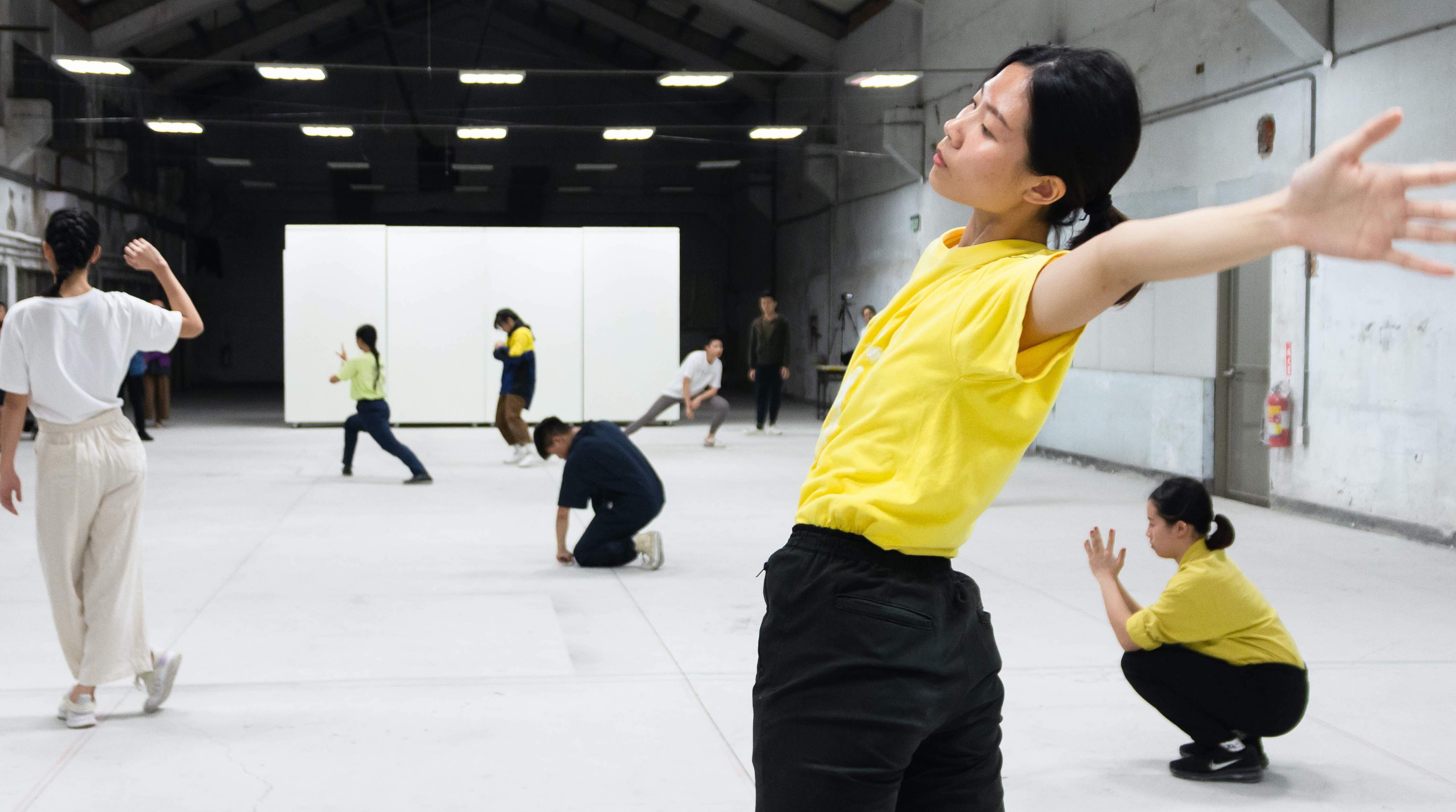

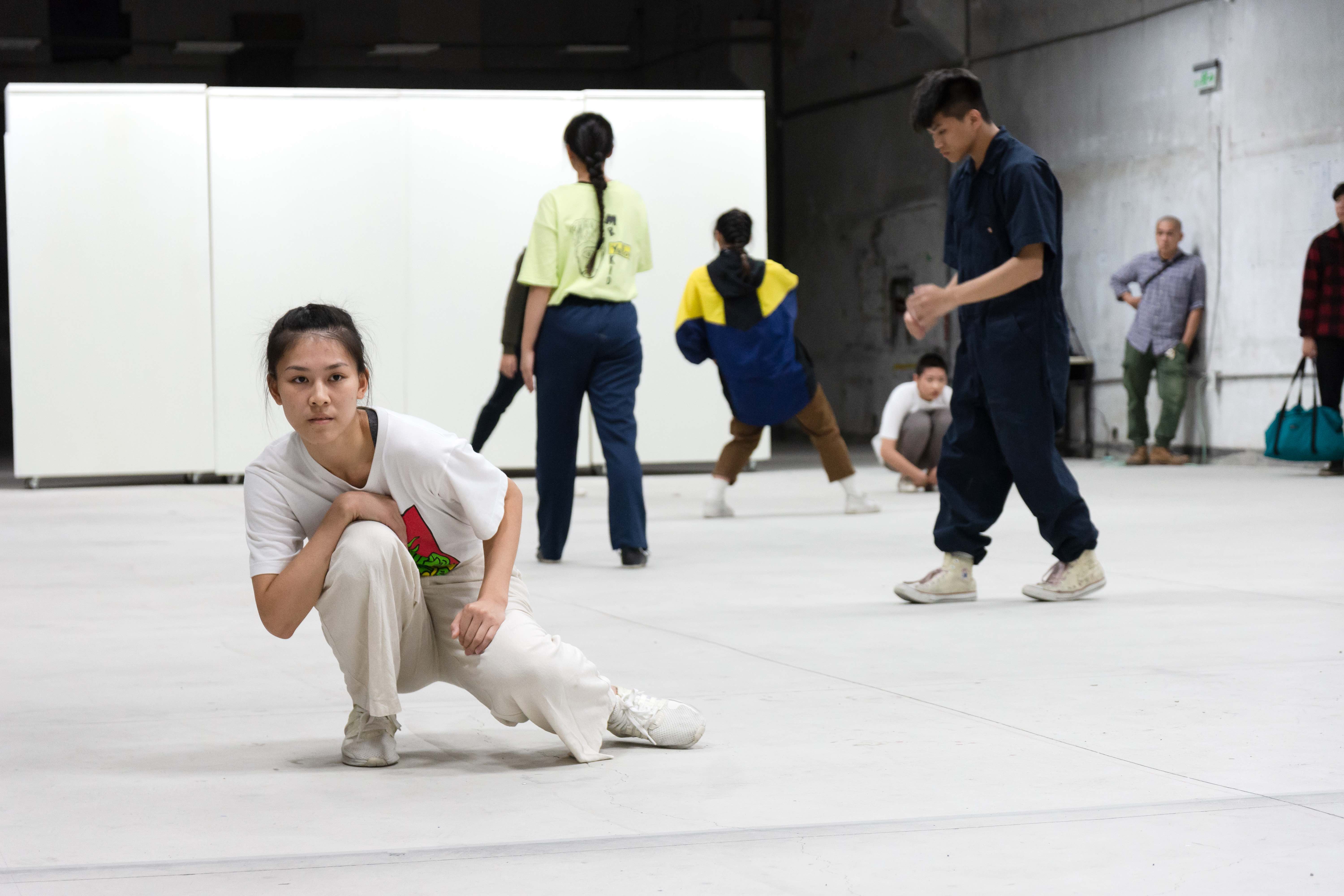
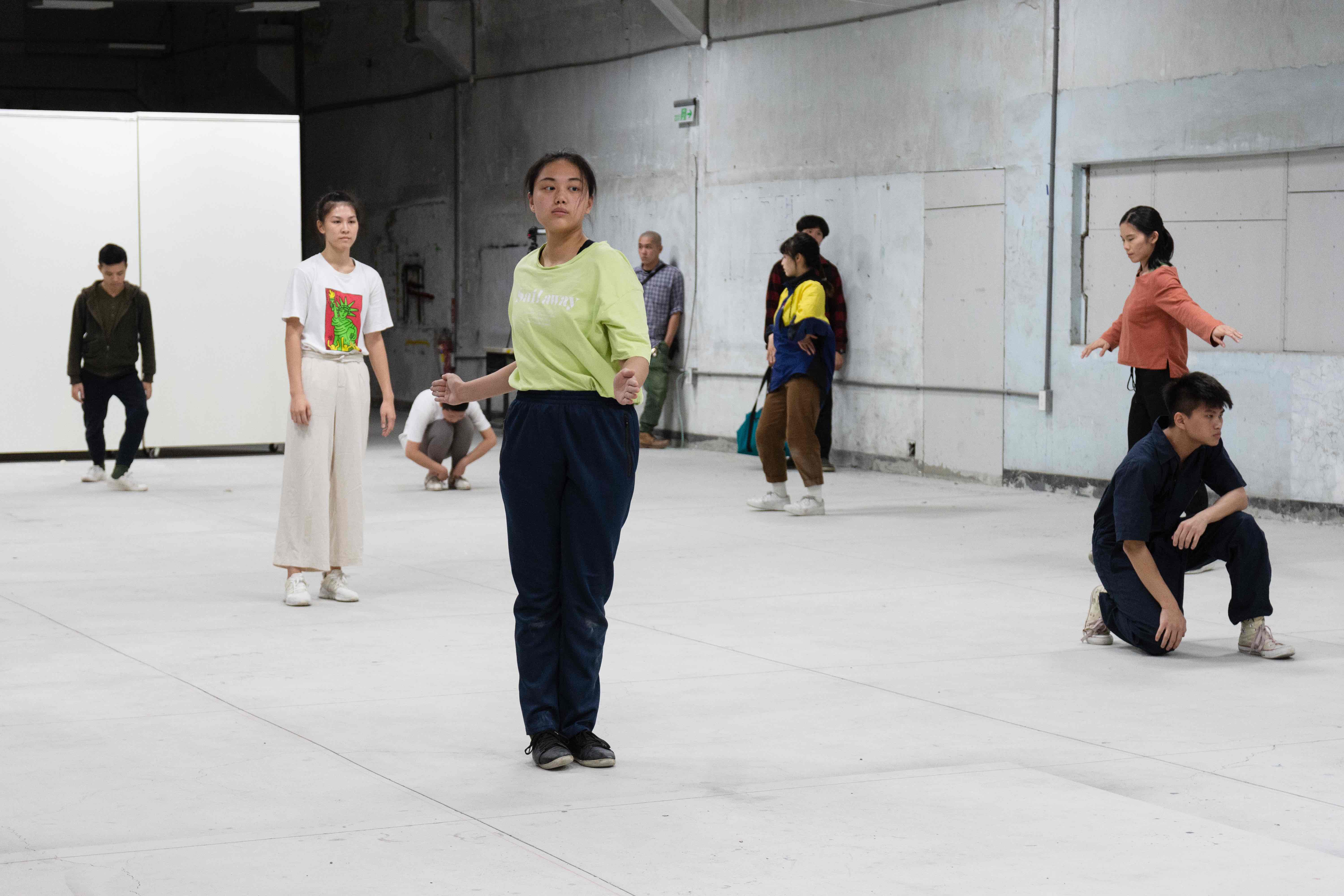
(17:30-17:42)
Think about your own history and memory as a performer. Observe how you move and what your movements are constituted by. Perceive these movements as part of a vast archive, that lives in tune within you and that is made up by your own history and memory as a performer. Identify ways, on how to access this archive and embody it.
Start to reflect on various chapters and chronicles from your archive. Work on one action at a time. If the action is exhausted, continue with the next one. Make clear choices on how to relate your personal archive and think about how you transition between your actions: by ‘stepping out’ of an action, by keeping the residue of an action, by transforming it, etc. ... Find yourself a safe space to start and give it a little time.
Let the audience come in.
(17:42-17:57)
Continue to reflect on one action at a time and observe what the action does to you. Use the following, or similar, sentence structures in your own language to illustrate this inquiry.
- It could be this
- Potentially also this
- But not this
- Moreover, it could be this
- It could be this [exhausting an action]
- …
Once the first performer starts talking, try to acknowledge that sound will become an important part the work from that point onwards. While moving, think about different variations in your voice as well as how your actions help you to access seemingly lost parts of your archive.
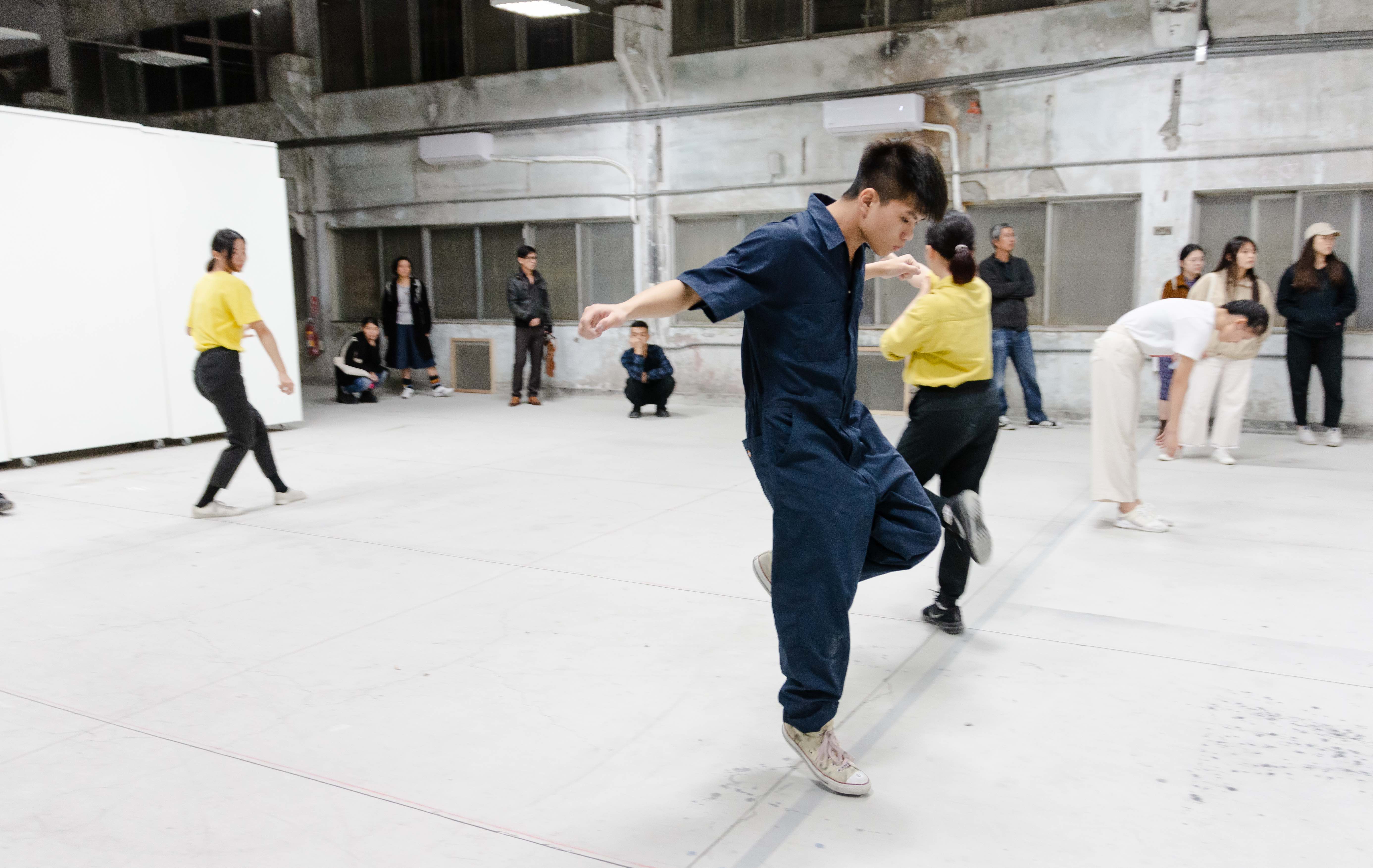
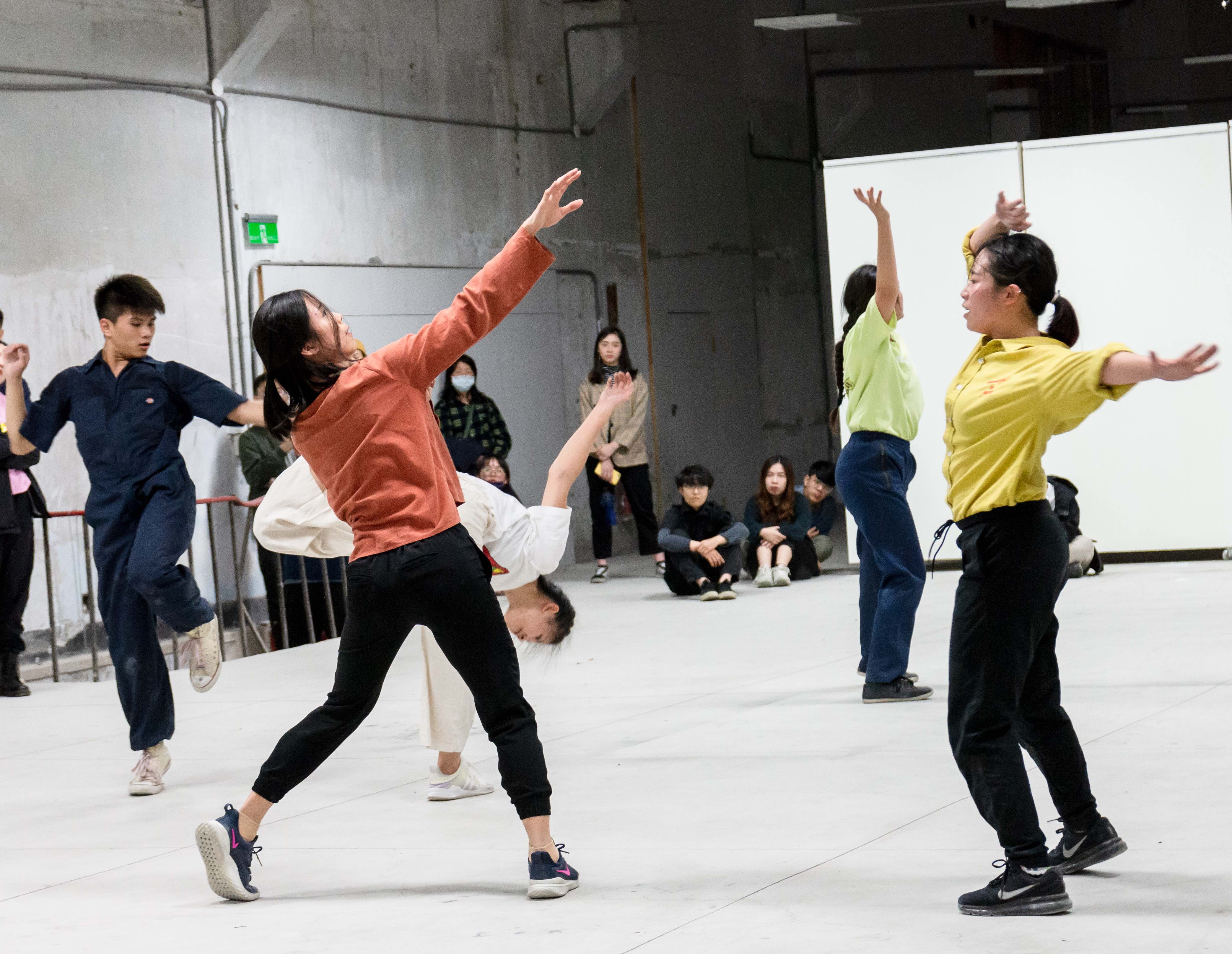
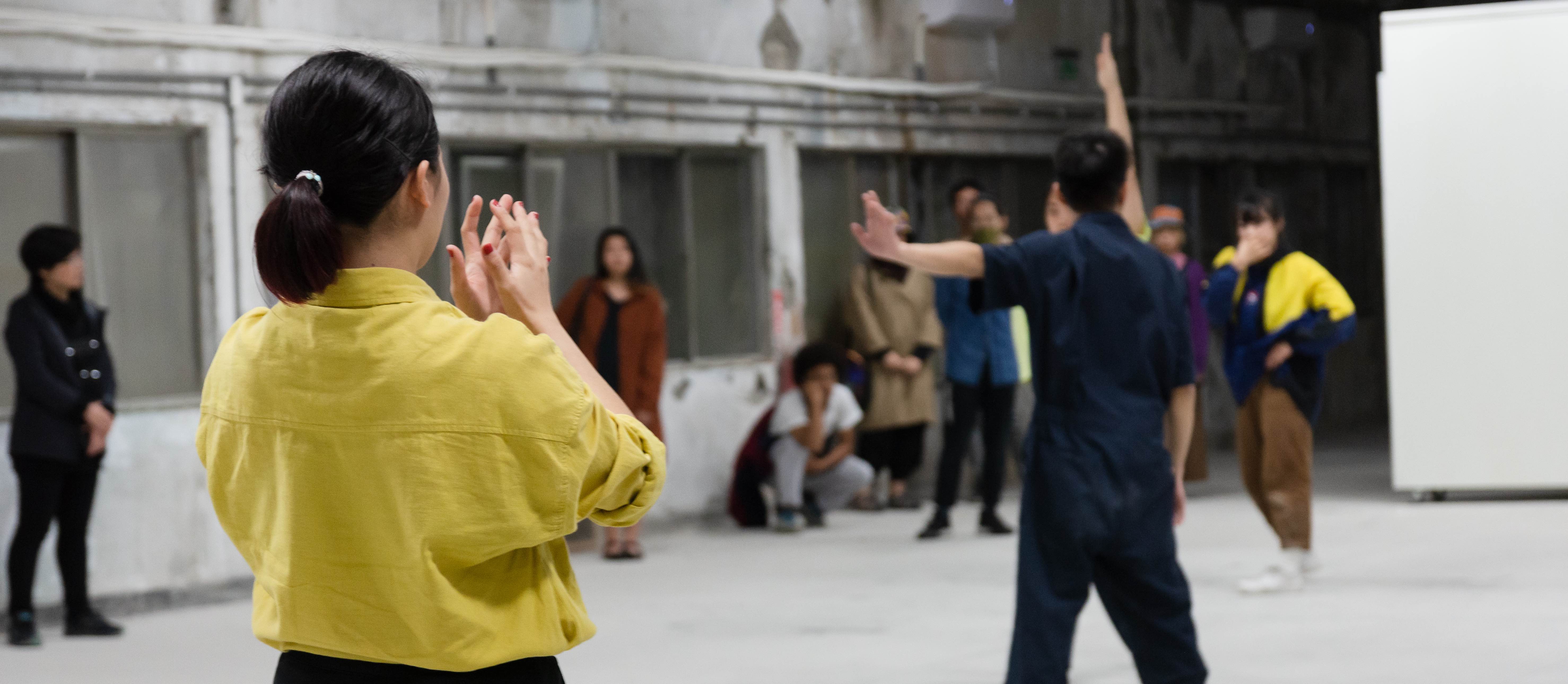



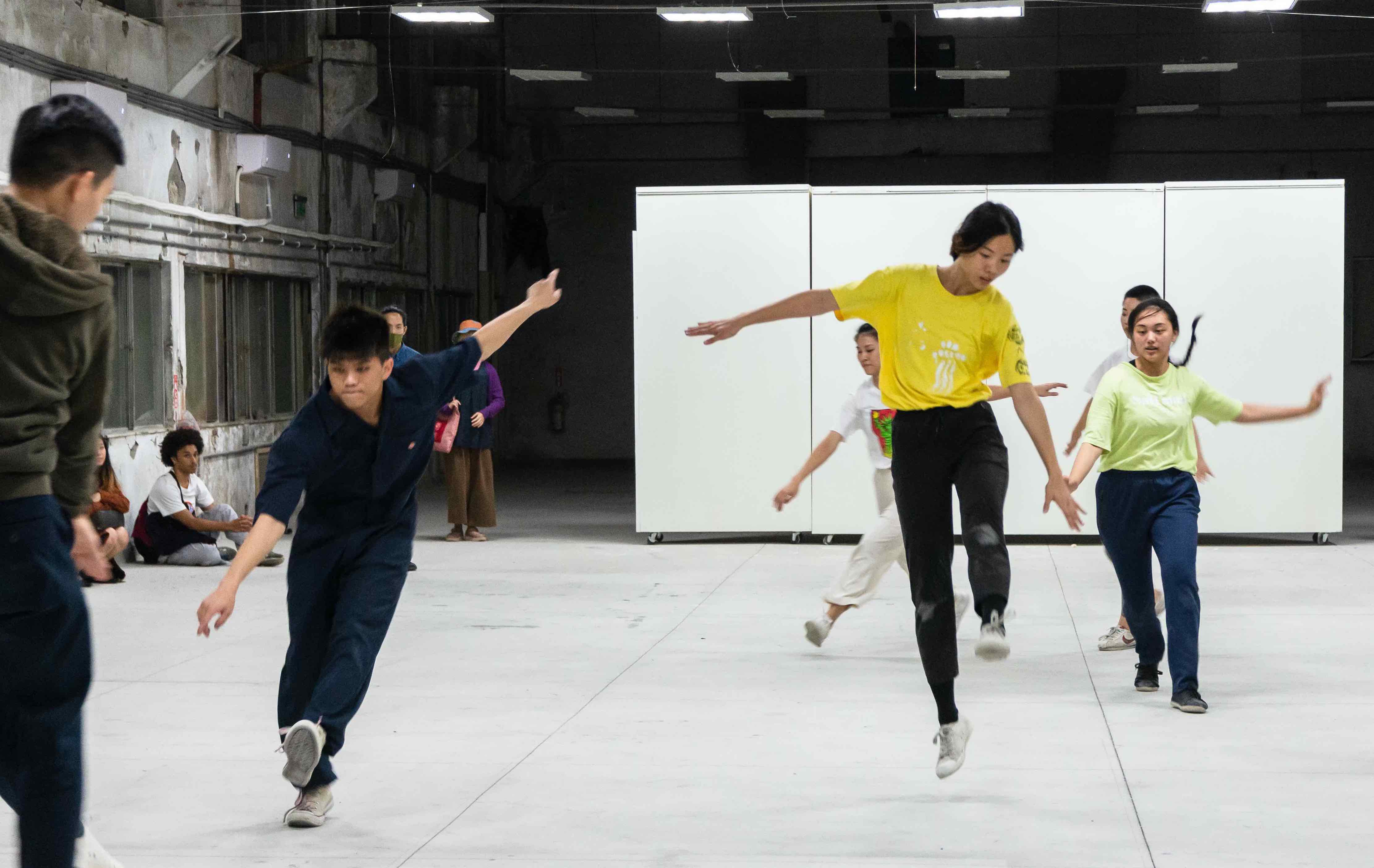
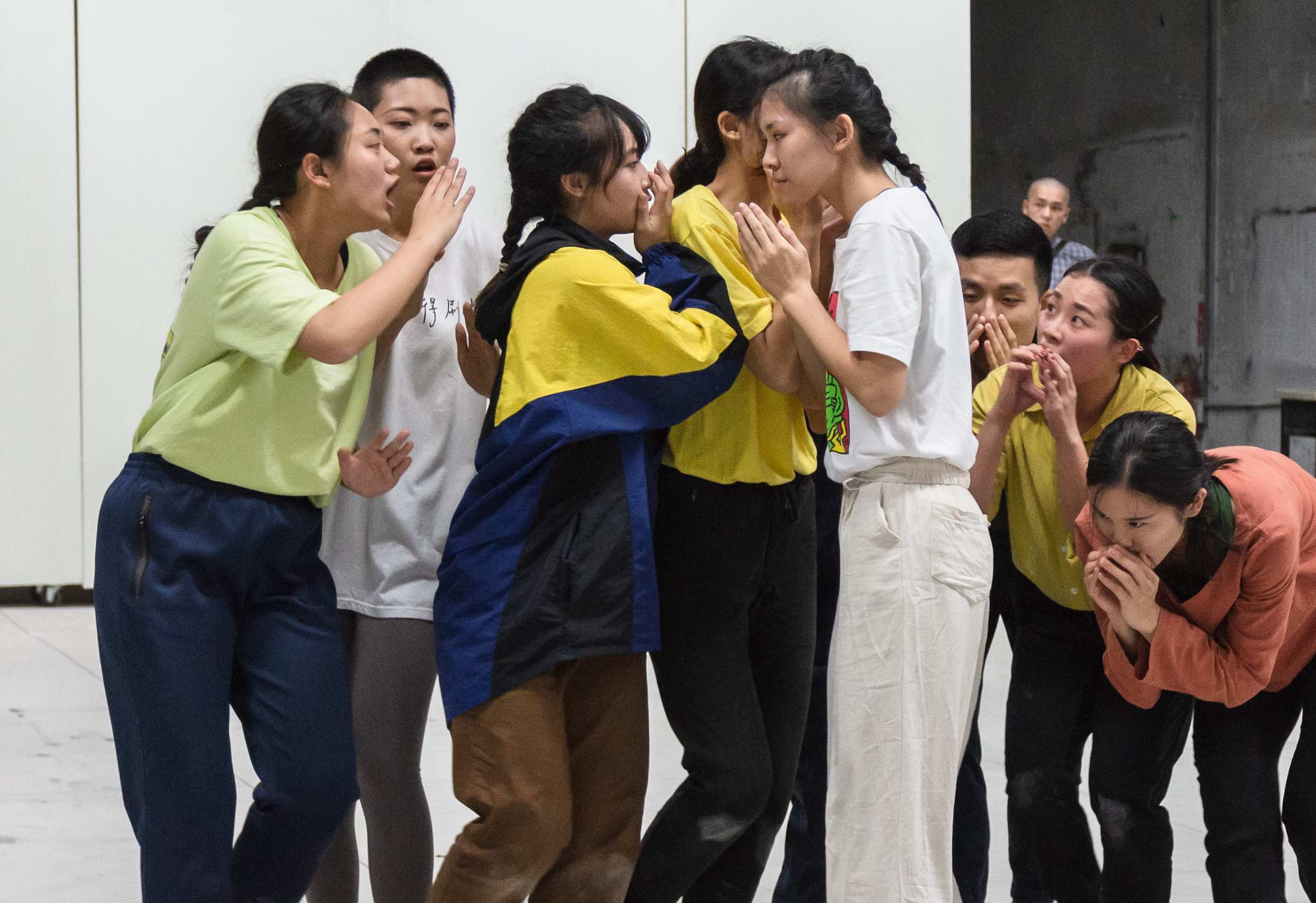
(17:57-18:07)
While one performer says “It could be [this]” the others continue to relate to it by either emphasizing, amplifying or tuning into the proposed action. The respective roles change after each action.
Keep it in be beginning slow and start to raise the energy-level steadily throughout by intensifying the pace of changes as well as the intensity of the proposed actions. Try to discover alternative ways how to relate to each others actions, e.g. by sensing what the action could imply, what bodily response the action triggers in you, supporting an action by emphasizing it or even illustrating what the complete opposite may be ... Try to relate to each action as fast as possible and trick yourself into thinking that the action was part of your personal archive. Reflect on what this idea personally does to you.
(18:07-18:12)
Continue with “Physical Conversations” and slowly start to relate to actions that emphasize a distinct rhythmical outline. Continue to delve into the rhythm or pulse of each action and slowly start to enter into a shared collective rhythmicality with the focus on raising the communal energy.
Once the group has arrived at an energy peak, break out of “Physical Conversations” and continue to emphasize the collective rhythm through the means of repetition and breath. Once shared breath emerges, try to connect to the pulse, i.e. try to exhale at the same time all together. Let loose your inner ghosts and spread the energy with the totality of the group, keep pushing it and allow exhaustion to take over
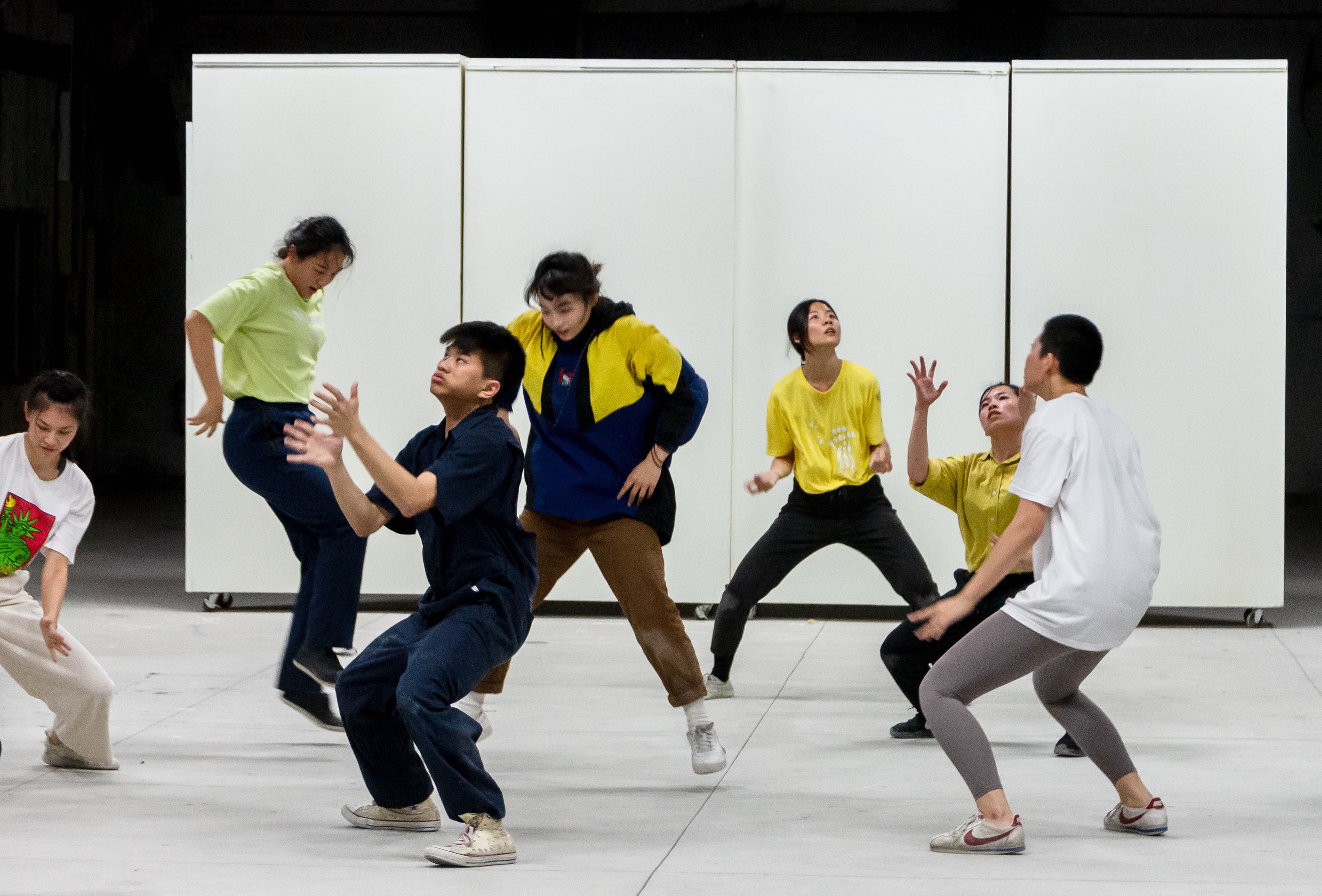
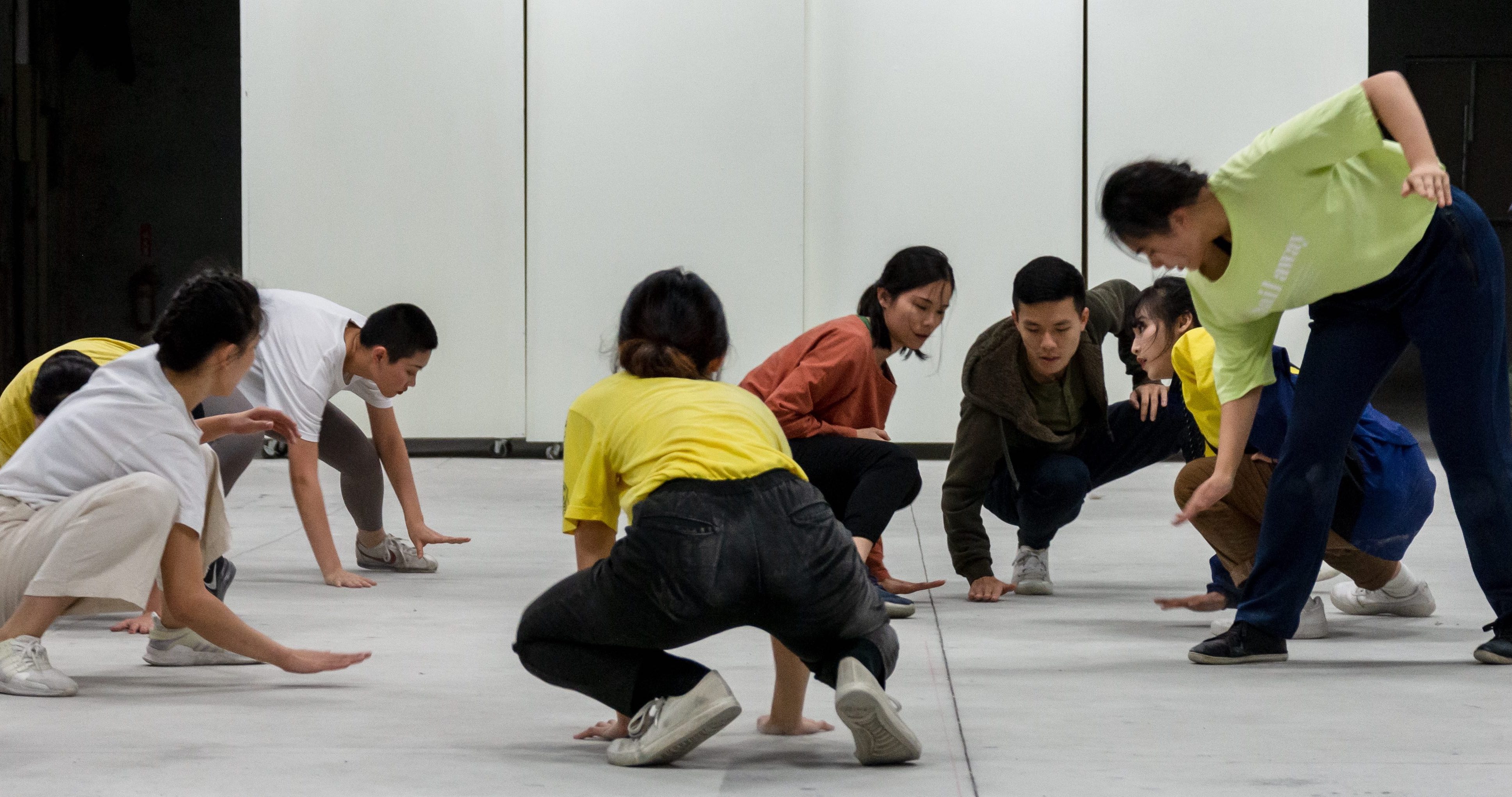
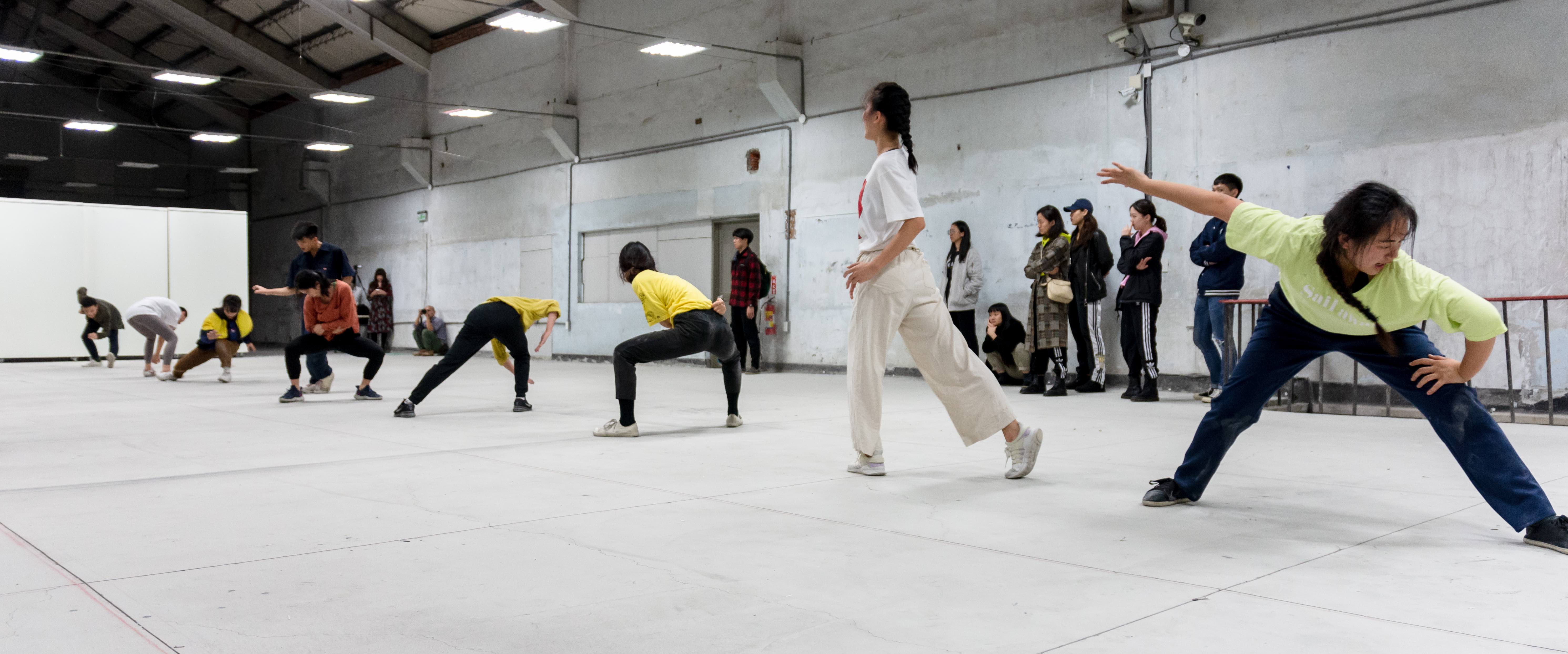

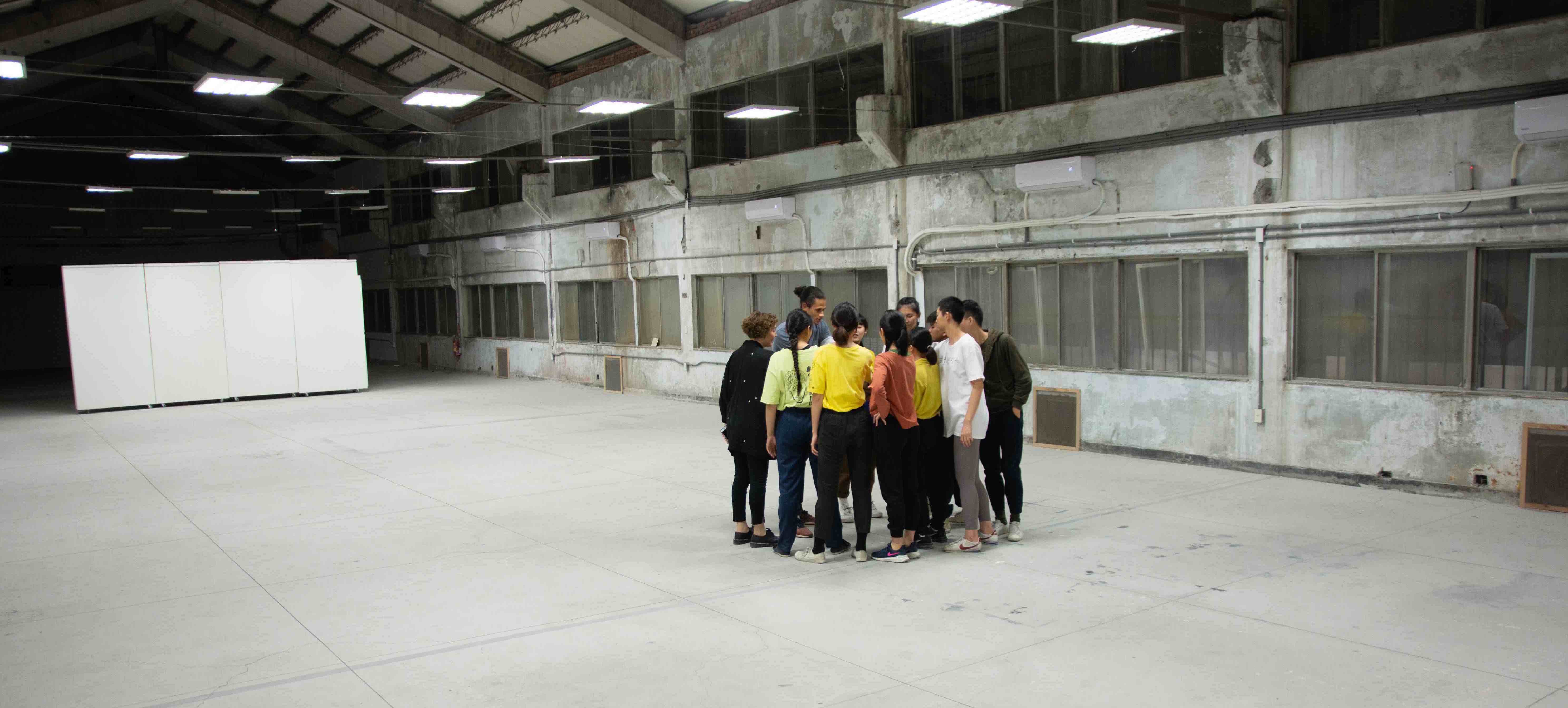


(18:12-18:27)
Once you feel that the group has arrived at an energy peak, slowly start to calm the breath down and delve into “Modulation of Words”. For that, prepare before the following: collectively discuss, choose and later on memorize 50 words that signify for you all an importance that would like to address within the realm of a performance.
Think about how you want to frame/give shape to what previously occurred in the work. Once you have done so, bring them into order: The words should start with the last bit of the previous word. (e.g. embodiment - mental - talisman …) They should not only be connected through their structures, i.e. their semantic meaning as well as their usage as idioms but should also signify a trace of the previously enacted archives.
Once you feel that the group has arrived at an energy peak, slowly start to calm the breath down and delve into “Modulation of Words”. For that, prepare before the following: collectively discuss, choose and later on memorize 50 words that signify for you all an importance that would like to address within the realm of a performance.
Think about how you want to frame/give shape to what previously occurred in the work. Once you have done so, bring them into order: The words should start with the last bit of the previous word. (e.g. embodiment - mental - talisman …) They should not only be connected through their structures, i.e. their semantic meaning as well as their usage as idioms but should also signify a trace of the previously enacted archives.
(18:27-18:35)
Finish the work by collectively speaking these words within five different cycles:
- 1st round: Speak in stillness the 50 words in a shared rhythm, as one group, into one direction. Close your eyes and try to sense how to follow the shared pulse. Focus on the open articulation of the voice so the words stay projected into space.
- 2nd round: First, look at each other and then speak the 50 words while moving to match the phonic materiality of each word. Slowly start to tune yourself to space.
- 3rd round: Speak the 50 words in stillness and continue to look outwards.
- 4th round: Define an action with every word and use stops in between.
- 5th round, the epilogue of the work: Start with an accumulation, where the first performer starts to say the first five words, then the next one enters and says their words … the end is when the last person entered and the 5th round of 50 Words is over.
The end.




© photo/video by 臺藝大造形表演工坊 Atelier Transformeurs